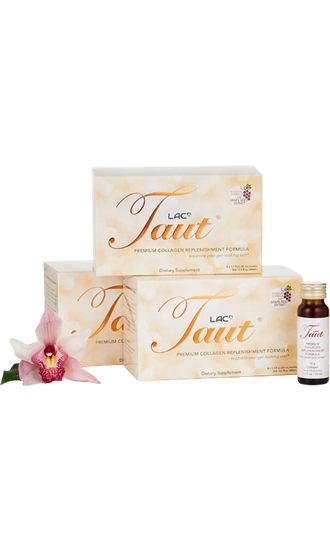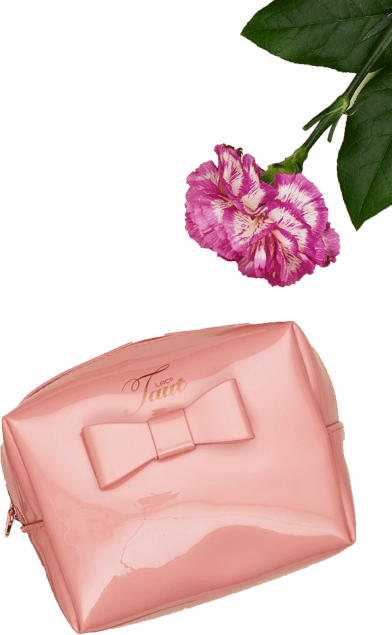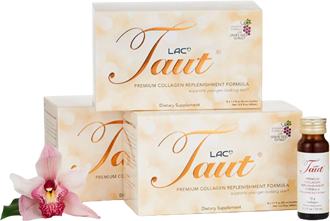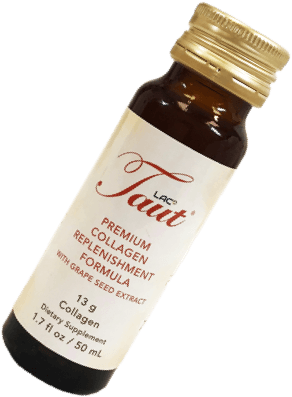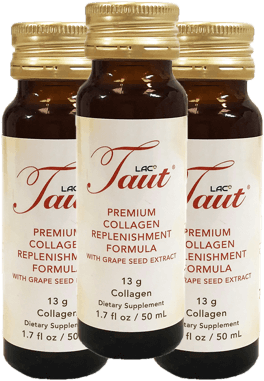Types of Facials: Different Facial Treatments & Best Type of Treatment for Your Skin!
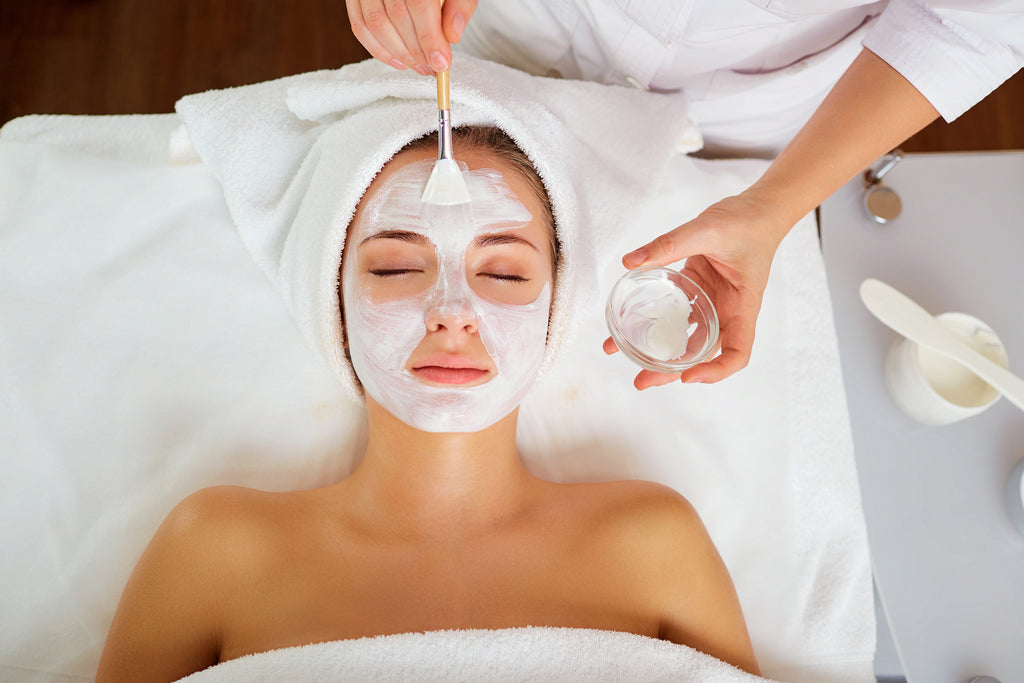
Whether you've never had a facial in your life or you are visiting your dermatologist for the hundredth time, you'll probably find yourself overwhelmed at all of the different types of treatments on offer. From celebrity fads to tried-and-tested classics, it's hard to know which facial is right for you.
When it comes to getting a facial, everyone has different skin types and concerns to tackle at different stages in their lives. Whether it's acne, redness, dry skin, or wrinkles you are facing, there's a facial treatment out there for everyone!
This guide by RenewSkin Inc. explains all of the different types of facials out there, including how they work and what their benefits are. We've also got some tips and tricks to help you get the most out of your trip to the spa!
What Are The Different Types of Facials?
If you're wondering "what does a facial do?" the answer will depend on the type of facial you get. Here is a rundown of every type of facial you need to know about:
1. Classic Facial
A classic facial covers all the steps of your skin care routine with professional products and a touch of luxury at the spa. The process will generally include cleansing, steaming, gentle exfoliation, facial massage, hydrating masks, serums, and moisturizers.
This type of facial is good for deep cleansing your skin or it can be a way to target a specific skin concern you may be facing. A classic facial procedure works like a top-up to your regular skin care routine.
The best thing about a classic facial is that the procedure can be adapted to your skin type, and customized according to your preferences. You can get a classic facial at any spa or esthetician's office, each of which may have its own special touches added to the procedure to make it unique.
2. Lymphatic Massage
A lymphatic massage can be incorporated into a classic facial or into many other different types of facials.
A lymphatic massage facial stimulates your lymphatic drainage system, which helps remove toxins and waste from your system.By stimulating the lymph glands in your face, these types of facial treatments can help to reduce puffiness, relieve tension, and reduce water retention, resulting in glowing skin. 1
The results of a lymphatic massage facial include a more sculpted-looking jawline, contoured cheekbones, and more youthful glowing skin.
3. Chemical Peel
Chemical peels are treatments applied to the face and neck to exfoliate and peel away the top layer of dead skin. These exfoliating facials use chemical acids to dissolve dead skin cells and reveal fresher layers of skin below, resulting in a glowing and more youthful complexion.
To anyone new to facials, peels may sound a little intimidating, but rest assured that these treatments are very safe. These treatments use exfoliating acids like salicylic, glycolic, mandelic, or lactic acid to remove a layer of dead skin cells, which can also help reduce the appearance of lines and wrinkles, acne scars and blemishes, dark spots, sun damage, and redness. 2
Chemical peels come in a variety of intensities: light, medium, and deep. Deeper chemical peels are used to target more severe skin concerns like scars and wrinkles, while light peels are more gentle exfoliants that simply brighten and tone your skin.
4. Hydrafacial
The hydrafacial is, as you might expect, a cleansing and hydrating facial that tackles dehydrated, dull skin and restores a dewy glow to your complexion. This facial has a five-step process that uses a suction device to extract debris out of your pores, moisturize your skin and exfoliate it.
The hydrafacial procedure uses a medical-grade device that works like a super-cleansing vacuum to remove toxins and boost circulation in the face, as it cleanses exfoliates, and sloughs away dead skin cells while infusing a revitalizing essence into your skin. The procedure gently extracts dirt and bacteria from your pores, with a deep cleansing effect that is great for getting rid of blackheads and whiteheads while also making your pores look minuscule.
Once your dead skin and imperfections have been removed, the final step of the hydrafacial drenches your face and neck with multiple layers of hydrating serums. The last step of this hydrating facial has a skin-plumping effect to make your skin appear dewy and radiant.
The best thing about the hydrafacial is that it works for pretty much all skin types, and the procedure especially good for anyone struggling with enlarged pores, dry skin, or persistent blemishes. However, this hydrating facial should be avoided if you suffer from any facial rashes or rosacea.
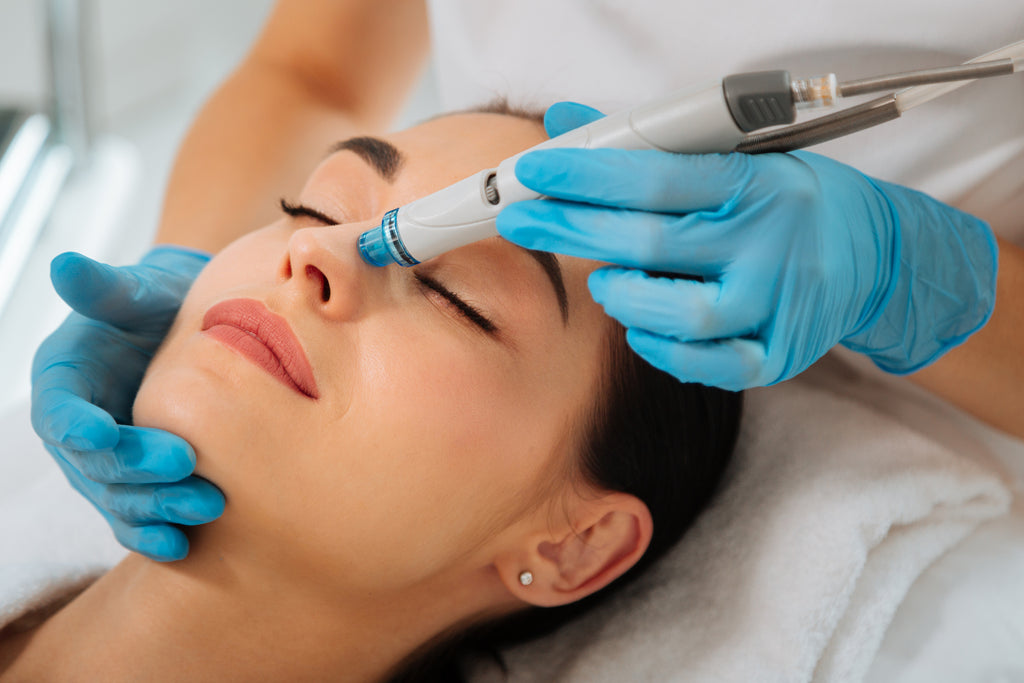
Looking for a way to keep your skin healthy and hydrated in between facials? To complement your hydrafacial treatments, you can amp up your home skin care regime with our Taut Hyaluronic Acid supplement that works to restore moisture to your skin and reduce the signs of aging.
Formulated with plant-based hyaluronic acid and grape seed extract, these supplements boost your skin's moisture levels, brightness, and defenses against external toxins from the inside out – reaching deeper than topical products or fillers can.
The result? Plumper, smoother skin with fewer fine lines and wrinkles!
5. Microneedling
Microneedling is an anti-aging facial treatment that boosts collagen production, reduces acne, and plumps up the skin.
Microneedling facials work by rolling tiny needles into the surface of the skin to create minute, microscopic punctures. Before your fear of needles emerges, rest assured that these are only tiny pinpricks at the surface layer of your face, and they aren't painful!
This type of facial creates minuscule surface punctures in your skin, which activates a wound repair response in your skin cells that encourages collagen production. Collagen is the protein your skin needs to heal wounds, but it also plumps up your skin and reduces the appearance of fine lines and wrinkles.
So, of the many benefits of microneedling, the most popular is its anti-aging effects. Microneedling facials can also encourage hair growth, heal acne scars, reduce hyperpigmentation, and minimize the appearance of pores.
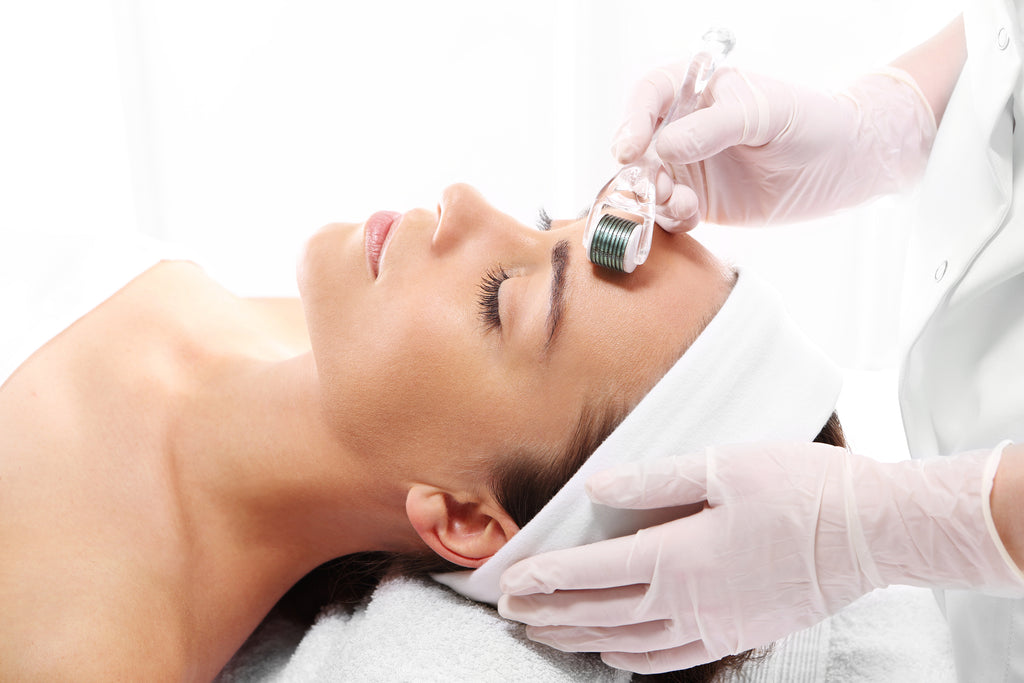
When it comes to aftercare, one of the best ways to speed up your skin's recovery after microdermabrasion facial treatments is to use a cooling and soothing face mask. Taut Collagen Mask is perfect for your post-microdermabrasion needs!
A rich and luxurious sheet mask infused with collagen peptides, hyaluronic acid, vitamin C, and botanical squalene, Taut Collagen Mask is specifically formulated to target sagging, dehydrated and dull-looking skin. The rich collagen essence triggers collagen production in the layers of your skin, which in turn speeds up your natural wound healing process and helps your skin recover from microdermabrasion, acne scars, or any other facial wounds.
Even better, its soothing formula also targets fine lines and wrinkles and leaves your face feeling more smooth, supple, and hydrated.
6. Acupuncture Facial
The acupuncture facial works on similar principles to microdermabrasion and microneedling facial treatments, but it uses more traditional acupuncture methods and longer needles. 3
In an acupuncture facial, your esthetician may place up to 80 needles across different acupressure points on your face, aiming to release tension and stimulate your body's natural healing response. This type of facial can help reduce facial puffiness, boost circulation, increase the flow of oxygen, and detoxify your skin.
The acupuncture facial can benefit people with acne-prone skin, or anyone prone to puffiness or fluid retention in the face. It may also help reduce the appearance of fine lines and wrinkles, by stimulating your body's wound-repair (read: collagen-producing) responses.
7. LED Light Therapy
LED light therapy is a type of facial that uses either blue or red wavelengths to stimulate reactions deep within your dermis.
A blue light facial is used to treat acne and other persistent blemishes. Blue light targets your sebaceous oil glands deep in the dermis, making them less active and reducing the amount of oil that they produce, while also killing bacteria in your skin. This helps treat acne and reduce inflammation in your skin.
Red light therapy is a type of collagen treatment that uses red light wavelengths to stimulate collagen production in the skin. This works to plump up your skin, reduce inflammation, and reduce the appearance of fine lines and wrinkles.
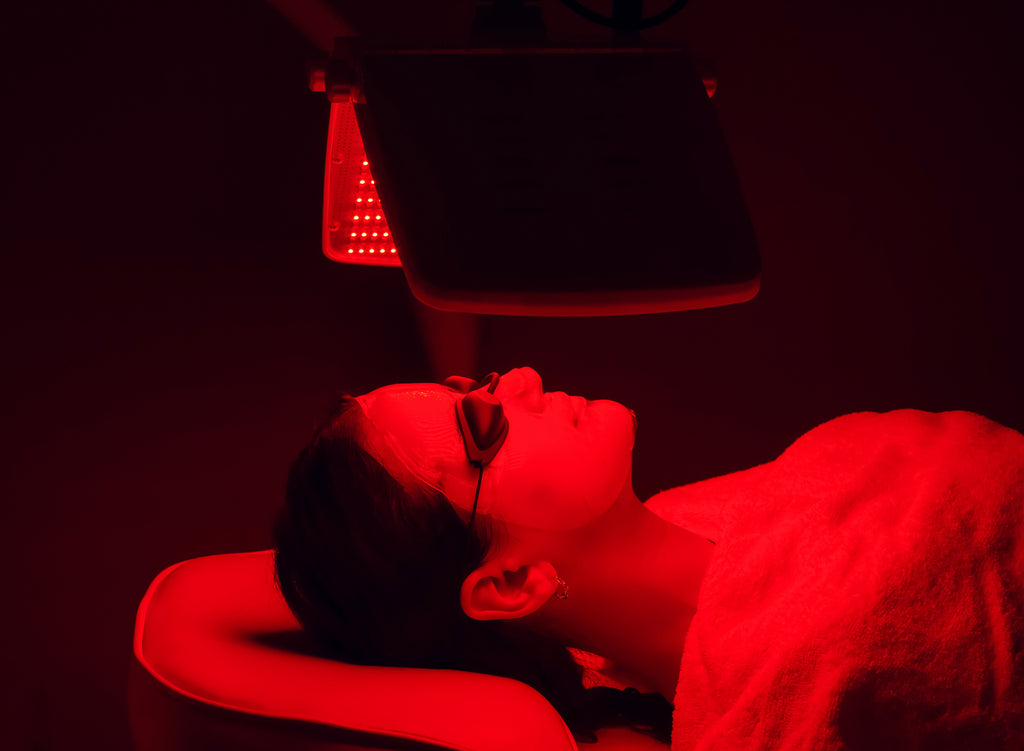
The downside to LED light therapy is that it can be costly, and it will take multiple sessions over a number of weeks to take effect. If you want to stimulate collagen production and reduce the signs of aging on your skin, one alternative would be to add collagen supplements into your daily skin care regimen.
The premise of collagen supplements is simple: consume a daily dose of collagen peptides to trigger the growth of new collagen in the skin and repair any of your existing damaged collagen.
Taut Premium Collagen Drink is a potent supplement containing 13,000 mg of hydrolyzed marine collagen peptides, which work quickly and effectively to trigger collagen production throughout your body. Our advanced formula also contains other skin-loving ingredients like elastin, hyaluronic acid, grape seed extract, ceramide, and vitamins C and B6.
With Taut, you can nourish your skin from within from the comfort of your own home. It's a great alternative to expensive in-office treatments, or, if you want to truly supercharge your skin, it's the perfect in-between treatment to keep your collagen topped up between facials.
8. Microcurrent Facial
A microcurrent facial is any kind of facial treatment that uses an electrical current to stimulate your skin and facial muscles.
There are two popular types of microcurrent facial:
- The Galvanic Facial – this facial treatment uses a mild electrical current to stimulate and strengthen the muscles in your face, shaping and toning your face to make you look more sculpted and youthful.
- The High-Frequency Facial – this treatment uses an electrical current to generate heat in the dermis (lower layer of your skin), which kills bacteria, heals scars, and reduces the appearance of blemishes – perfect for acne-prone skin!
Although they sound a little scary, microcurrent facials are completely safe and pain-free.
9. Laser Resurfacing
Laser skin resurfacing is a type of facial treatment that uses a laser to remove the top layers of the skin and heat the dermis below. This is used to slough away dead skin cells, remove dark spots and acne scars, reduce the appearance of wrinkles, and even out uneven skin tone – so you can glow with confidence!
This type of facial uses a Fractional CO2 Laser to damage a pattern of skin cells, activating a healing process that stimulates the production of new cells, which in turn lends your skin a more dewy, youthful complexion. The heat generated in your dermis stimulates the growth of collagen, and it has a tightening effect that makes skin look smooth and taut.
Laser skin resurfacing is one of the more invasive types of facial treatments, requiring sedation and potentially a general anesthetic.
10. Anti-Aging Facial Treatment
If you're wondering how to have youthful skin texture, you should talk to your dermatologist about the best anti-aging facial for you.
Although many different types of facials have anti-aging benefits, an anti-aging facial at your favorite spa may incorporate techniques and steps from a combination of the above-listed treatments. This can include any combination of deep cleansing, light therapy facial, chemical peels, microdermabrasion, or microcurrent treatments, which will work together to fight the signs of age and make your complexion more youthful and vibrant.
The goal of anti-aging treatments is to get rid of dead skin cells, reduce wrinkles and age spots, and lift and tone sagging skin. It may also incorporate a brightening facial treatment that improves your skin tone and restores a dewy glow to your complexion.
If you have mature skin and you are looking for some healthy skin rejuvenation, speak to your dermatologist or esthetician to formulate an anti-aging facial that works for you.
6 Tips For Getting The Most Out Of Your Facial
When it comes to getting a facial, there are right and wrong ways to incorporate facial treatments into your skin care regimen. If you want to avoid any unwanted side effects or nasty surprises, follow these top tips for getting the most out of your trip to the spa:
1. Identify Your Main Skin Concern
Because there are so many different types of facials out there, it can be easy to get overwhelmed or not know which is right for you. Start by identifying the main concerns you want to tackle with your skin and work from there to figure out your best treatment options.
To treat fine lines and wrinkles, your best options will be those that boost your collagen production, particularly microdermabrasion and LED red light therapy. Sagging skin may benefit most from microcurrent and laser treatments.
For acne-related issues, blue light therapy, a high-frequency facial, or a hydrafacial will be the best options to help you tackle those pesky blemishes and kill bacteria.
If you have a dry skin type and suffer from dullness, opt for light chemical peels or a plumping hydrafacial with plenty of hydrating hyaluronic acid serums.
To treat pigmentation, scarring, or age spots, your best options will likely be a medium or deep chemical peel or laser resurfacing.
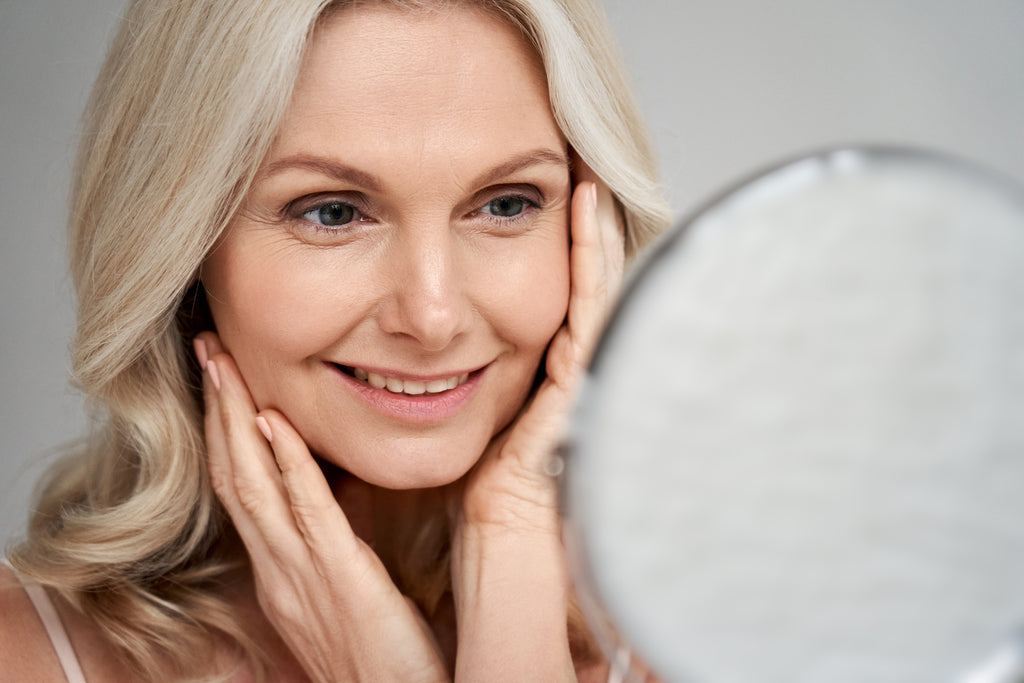
2. Understand Your Ingredients
When it comes to choosing the best facial treatment for your skin, it helps to know which skincare ingredients you should be looking out for. Here's a quick guide to some of the main ingredients you should know about:
- Vitamin C – this vitamin is a powerful antioxidant as well as being a cofactor of collagen. Your body needs this vitamin to make collagen. Vitamin C is also a key ingredient in brightening facial treatments, as it can help even skin tone, fight age spots, and reduce redness. It also boosts your skin's natural defenses against external toxins.
- Retinol or Retinoids – these ingredients are vitamin A derivatives that boost cell turnover, promoting brighter skin, reducing acne, and increasing your collagen production.
- Collagen Peptides or Growth Factors – these ingredients trigger your skin cells to produce more collagen, the protein that is responsible for the structure of your skin.
- Hyaluronic Acid – this acid is a humectant that can attract and retain up to 1,000 times its weight in water, and it keeps your skin's collagen and elastin flexible. It is a great hydrating ingredient that helps to plump up the skin and keep it supple and soft, and everyone with sensitive skin types or dry skin types should definitely get familiar with it.
- Salicylic Acid – this exfoliating ingredient is used in many chemical peels, and it belongs to a family of acids known as AHAs (alpha-hydroxy acids). Salicylic acid works to dissolve dead cells on the top layer of your skin, and it has a brightening and anti-aging effect. However, this ingredient may be too harsh for sensitive skin .
3. Prepare For Your Facial
Preparation is key to getting the most out of your facial. There's no point spending time and money on a trip to the spa only to have it ruined by poor preparation.
The night before your facial treatment, make sure you skip any potentially harsh ingredients in your skincare routine. That means you'll need to skip your retinol or any exfoliating acids (AHAs or BHAs). This is because these ingredients can leave your face more prone to sensitivity, irritation, and redness, which is exactly what you want to avoid when undergoing a facial treatment!
On the day, make sure you show up with a bare face, which means no makeup and no skincare products like serums or moisturizers. Basically, you want to avoid anything that could form a barrier layer that might stop your facial treatments from working as effectively as they should.
Lastly, make sure your face is ready for the treatment and is not suffering from any rashes, severe sun damage, or allergies.
4. Choose The Right Professional
When it comes to choosing a practitioner, opt for a board-certified dermatologist or find an esthetician that is an expert in what they do. This is particularly important when you are going for the more invasive types of facials like chemical peels or laser resurfacing, as the potential to damage your skin is higher.
Book in for a quick spa consultation before the treatment to discuss your specific concerns and needs, too. The right dermatologist will be happy to guide you through your options and make sure the treatment is right for you.
5. Consider The Downtime
Don't forget that most facials won't leave you looking instantly radiant and glamourous, and some breakouts or redness can happen at first. This means you won't want to book any spa treatments or facials on the day of a big event!
This applies to both invasive facials and non-invasive facials. Although invasive facials will need plenty of recovery time afterward for your skin to heal, even non-invasive facials can leave your face looking a little puffy, irritated, or painful at first.
Of course, this will subside with time, but if any redness is particularly persistent after any of your treatments, make sure you speak to your dermatologist who can assess your reaction.
6. Take Care Of Your Skin Between Facials
While facials are a great way to boost your skin, they won't do all of the work for you. In order to get the most from your facials, it's important that you look after your skin in between spa treatments with a proper skincare routine.
Nourish your skin from within with plenty of antioxidant-rich fruits and vegetables, stay hydrated by drinking plenty of water every day, and get your daily exercise in to keep circulation flowing to your skin.
You don't need a hugely extensive 10-step beauty routine (although you can if that's your thing), but make sure you cleanse, tone, and hydrate your skin daily. By using a gentle cleanser, antioxidant-rich serums, and a broad-spectrum SPF every day, you'll be well on your way to healthy and glowing skin!
If you take good care of your skin, you will have a naturally healthy complexion that your facials can serve to build and improve on. Topping up your skincare routine with different kinds of facials once or twice a month should be about giving your skin an extra rejuvenation – not just a quick fix!
Care For Your Skin Every Day With Taut
When it comes to taking care of your skin, we believe that healthy skin starts from within. Nourishing your skin from the inside out is the essential first step in achieving a youthful and radiant complexion.
That's why we have created the Ultimate Transformation Program, which combines two of our best skin care supplements with a luxurious topical treatment to give you the best chance of achieving truly healthy skin.
This program combines a 24-day supply of our signature Taut Premium Collagen Drink with Taut Hydrate, our best hyaluronic acid supplements, and Taut Collagen Mask, our soothing and plumping facial treatment. Together, these three skincare heroes work from the inside out and the outside in to supercharge your collagen supplies, hydrate with hyaluronic acid, and brighten and protect with antioxidants.
Our collagen drink offers your skin a daily dose of premium marine collagen peptides, which can help slow down and reduce the signs of aging, and visibly reduce fine lines, wrinkles, and sagging skin. Meanwhile, Taut Hydrate can treat dry skin, brighten and even out your skin tone, and plump up your complexion for a more youthful appearance.
Finally, Taut Collagen Mask is a luxurious treatment that supercharges your skin at the surface layer, boosting your collagen supplies while infusing your skin with a soothing and hydrating combination of humectants and potent antioxidants.
Together, these three products work synergistically to help you feel the benefits of an anti-aging, hydrating, and brightening facial from the comfort of your own home!
Contact our team or try our skincare quiz to find the perfect products for you!
References:
- How to perform a lymphatic drainage massage
- What You Should Know About Chemical Peels
- Cosmetic Acupuncture



